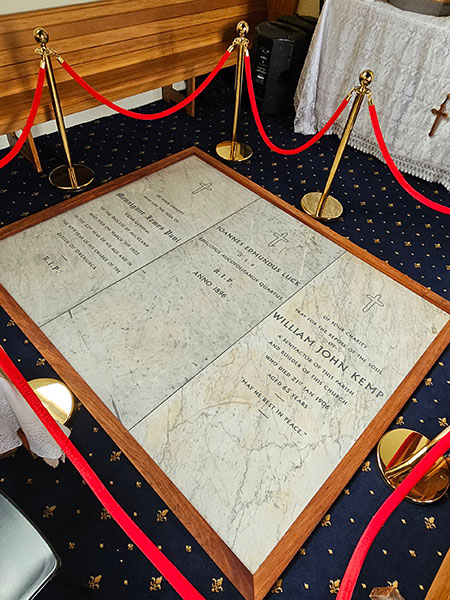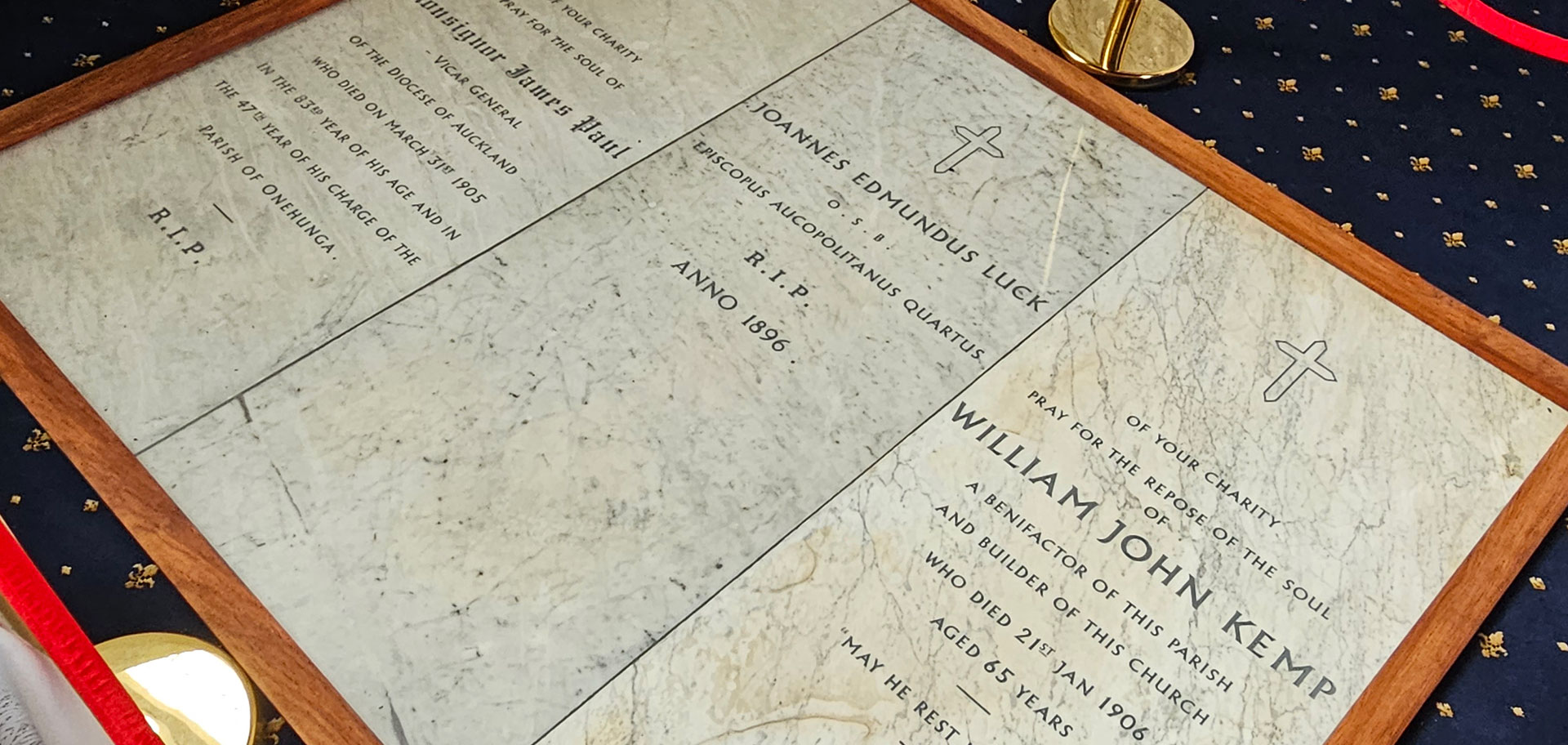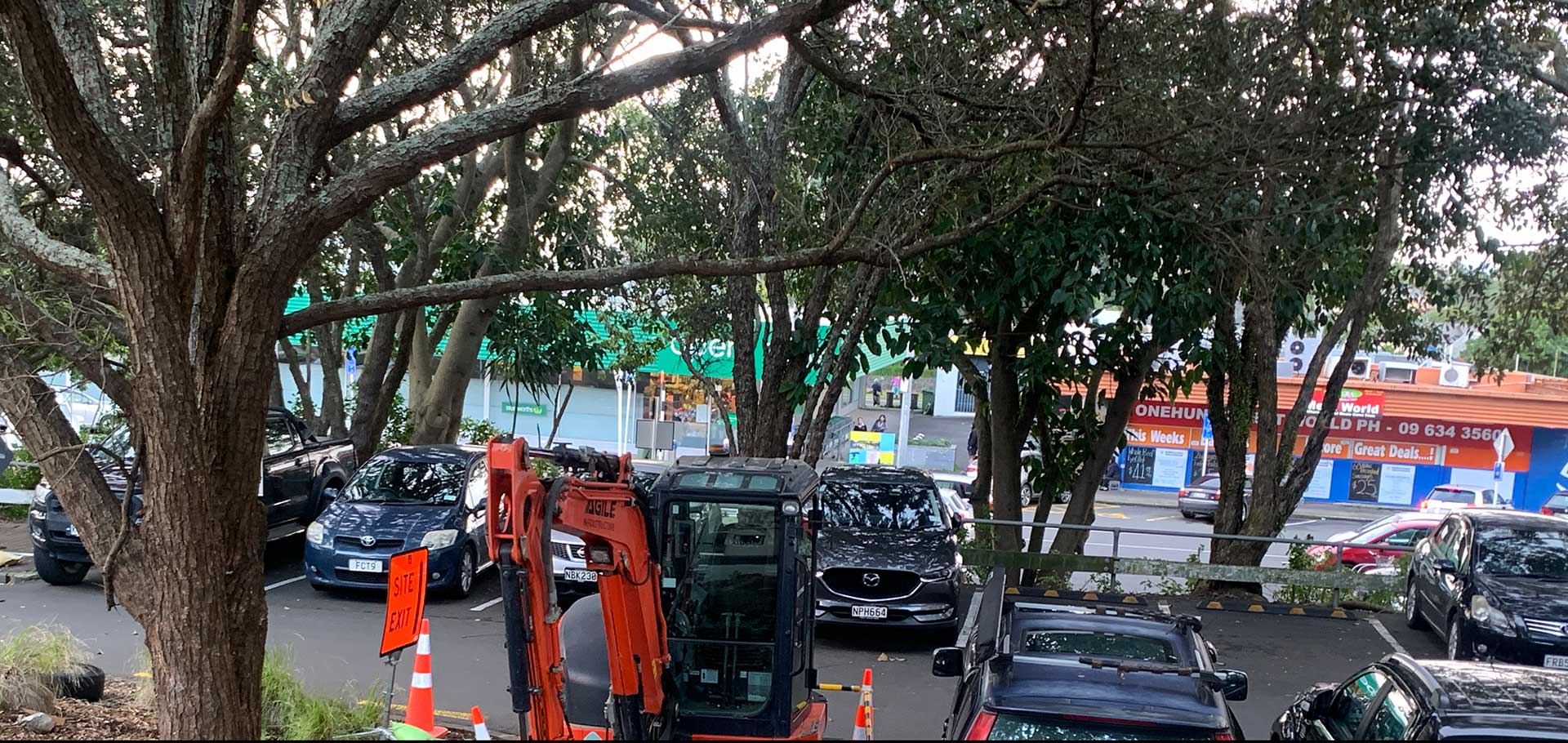Hidden graves found in church renovation2 min read
Reading Time: 2 minutes
The simple task of preparing the floor for a new carpet at Onehunga’s Church of Our Lady of the Assumption (Catholic), led workers from a carpet company to uncover a hidden piece of history.
Buried beneath layers of vintage cork tiles, the team at GilesCarpets Ltd stumbled upon three marked graves that had been forgotten for decades.
The graves belonged to significant figures in the church’s history: Monsignor James Paul (died on 31st March 1905, aged 83), the original parish priest for Onehunga and Vicar General of the Auckland iocese; William John Kemp (died 21st January 1906, aged 65), the church’s builder; and Bishop John Edward Luck (died 1896), the fourth Catholic Bishop of Auckland.
The discovery at the church, on the corner of Church and Galway Streets, was made at the end of last year. Ironically, plaques commemorating all three men are on the wall of the church, in close proximity to the hidden graves, but no one realised they were buried nearby.
Kevin Giles, owner of Giles Carpets Ltd, initially doubted his staff’s claims about the discovery. “I didn’t believe them. It was just incredible,” he exclaimed. The graves were covered by the vintage cork tiles about 70 years ago, and were concealed beneath the carpet being restored at the time. Kevin’s employees were stripping the floor back to its original surface with diamond-tipped grinders when the graves emerged. The restoration process brought its own set of challenges, as Vaughan Jacobsen of Jacobsen’s Headstones, discovered.
He says they were called in to restore the graves, but this kind of restoration was a first for him.
He says the glue used on the cork tiles had obscured the graves significantly. The grinders used to strip the floor accidentally cut into the marble graves, damaging some of the original lead inscriptions.
Despite the hurdles, Vaughan took on the unique job, and opted to level the marble, polish it and replicate the inscriptions by cutting into the marble and painting the letters. A specially commissioned wooden surround was added to frame the restored graves.
Vaughan speculates that the graves were covered to make space for additional pews, and that was when the plaques were put on the wall. The type of bronze used for the plaques for Mgr. Paul and William Kemp were common in the late twentieth century, and would not have been used at the time of their deaths.
Both Vaughan and Kevin are proud of the role they had in uncovering and restoring the hidden piece of history.
“It’s one of those things in life you get a kick out of,” says Kevin.
The restored graves will be officially unveiled this month, and descendants of William Kemp are expected to attend. This will not only mark their ancestor’s life and work, but also celebrate the restoration and significant chapter in the church’s history



